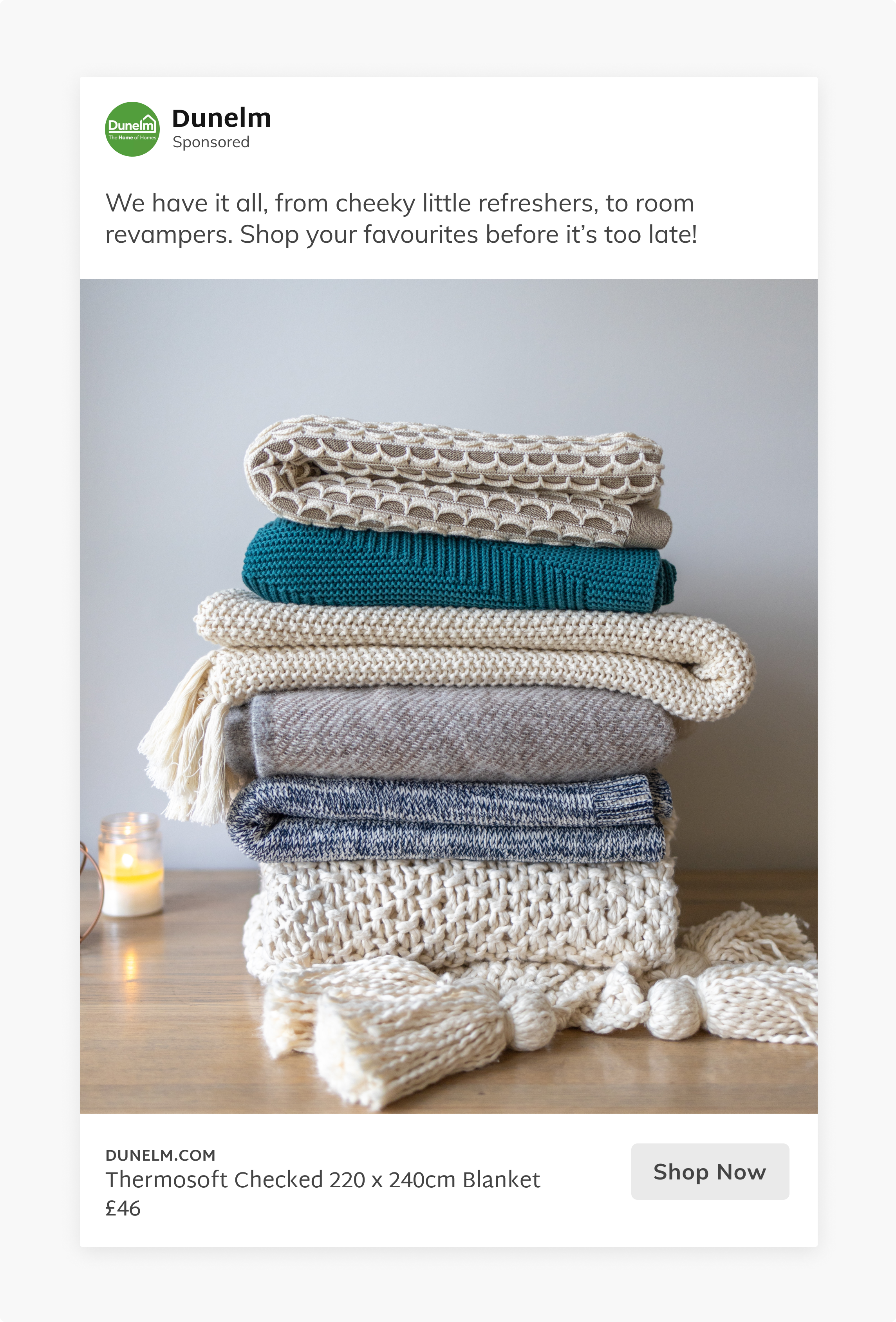Incrementality case study
Measuring for incrementality makes Dunelm’s Facebook Ads 90% more effective
Dunelm and Crealytics ran a randomized controlled experiment to compare the attribution system ROAS against incremental impact - with surprising results.
Sign up for our Incrementality Course
01 Introduction
Incrementality: theory vs practice
Digital Marketers widely understand the importance of incremental performance measurement. A recent survey even shows that the marketing leadership teams of large e-commerce brands consider incremental revenue as the most important KPI in Digital Marketing.
Source: Crealytics and WBR insights retailer survey 2020. n=100
Yet 61 out of 100 companies have not even started to execute incrementality tests. Isn’t that strange for something considered to be the most important KPI?
The explanation for this paradox is that even digitally savvy organizations struggle to bridge the gap between theory and practice.
This case study shows how a home furnishings retailer and Crealytics have bridged this gap together by measuring and improving the incremental return of Facebook campaigns.
The explanation for this paradox is that even digitally savvy organizations struggle to bridge the gap between theory and practice.
This case study shows how a home furnishings retailer and Crealytics have bridged this gap together by measuring and improving the incremental return of Facebook campaigns.
About Dunelm
Dunelm is one of the largest homewares retailers in the United Kingdom. It is listed on the London Stock Exchange and a constituent of the FTSE 250 index.

There is more than meets the eye; any attribution model is likely to over- or undervalue the incremental value of any campaign.
Digital Marketers have long depended on ad platform reports and multitouch attribution tools to understand which campaigns drive marketing returns for their business – and they act on the reported numbers by allocating marketing budgets.
But alas, most attribution reports are wrong and can even cause harm. The numbers reported to marketers do not show the true financial impact of marketing channels and campaigns. To understand true causal impact, incrementality testing is needed.
But alas, most attribution reports are wrong and can even cause harm. The numbers reported to marketers do not show the true financial impact of marketing channels and campaigns. To understand true causal impact, incrementality testing is needed.
02 The Challenge
Exploring new ways to move the needle
Dunelm and Crealytics wanted to understand how much they could move the needle by taking incrementality optimization from theory to practice. The chosen approach was to first measure the incremental ROAS of Facebook Ad campaigns, and then to increase it as much as possible – while keeping monthly ad budgets stable.
The Facebook campaign structure mimicked a classic e-commerce conversion funnel with two major segments:
Dunelm and Crealytics had two hypotheses in mind:
Prospecting campaigns might be undervalued. We believed that because they initiate new customer journeys, they do serious heavy lifting that may have more impact on revenue than reflected in multitouch attribution.
Retargeting campaigns might be overvalued. Because retargeted people are in the lower funnel, they might buy anyway without being exposed to more ads
If the hypothesis turned out to be true, Crealytics’ Digital Marketing team would re-allocate budgets from where they shine in traditional attribution reporting (Retargeting) to where they truly drive more impact (Prospecting).
But before any execution, these counterintuitive tactics needed proof in data.
But before any execution, these counterintuitive tactics needed proof in data.
03 The approach
Retargeting vs Prospecting
To gain a better understanding of incremental impact, Crealytics ran a randomized controlled experiment, supported by Facebook’s Conversion Lift tool, to compare the attribution system ROAS against incremental impact.
After roughly six weeks of testing, the Conversion Lift Test showed statistically relevant results for both prospecting and remarketing campaigns.
Yet, by including the incrementality measurements of the Conversion Lift test, a surprisingly different valuation emerged.
To put things into perspective: the Dunelm’s business roughly got a 5.7x higher return from prospecting than retargeting.
04 The Results
A 5.7x higher return from prospecting vs retargeting
In line with the test, Dunelm decided to move Facebook ad budgets from retargeting to prospecting, gradually increasing its spend share from 55% to 70%.
As a result, the Dunelm’s incremental Facebook ROAS increased by +90%, driving nearly twice as much impact for every advertising dollar. While incrementality optimization can seem daunting at first, it is worth implementing as it is one of the biggest levers to really drive business impact.
As a result, the Dunelm’s incremental Facebook ROAS increased by +90%, driving nearly twice as much impact for every advertising dollar. While incrementality optimization can seem daunting at first, it is worth implementing as it is one of the biggest levers to really drive business impact.
Upgrade your customer portfolio
CLV-Centric Advertising: Customer Centricity,
Corporate Valutation, and eCommerce Acquisition
Corporate Valutation, and eCommerce Acquisition
